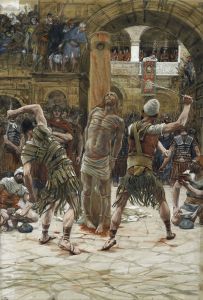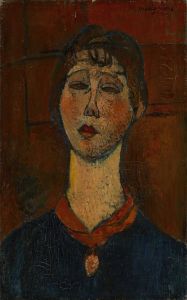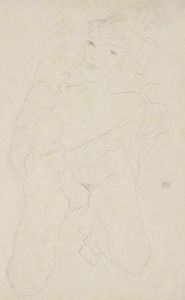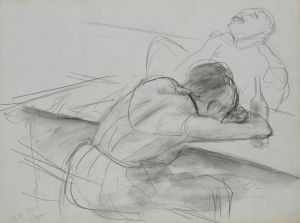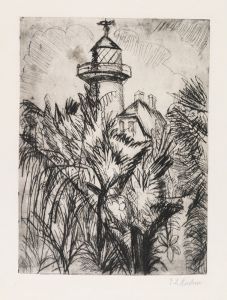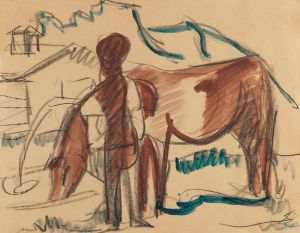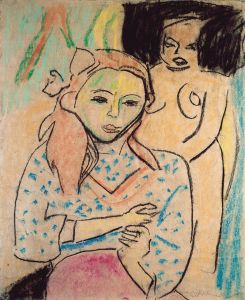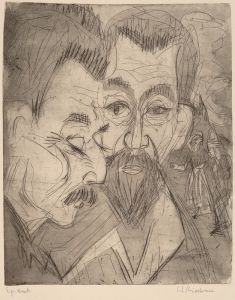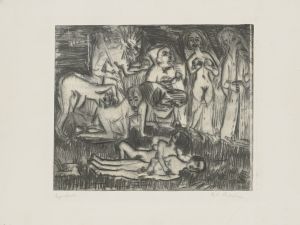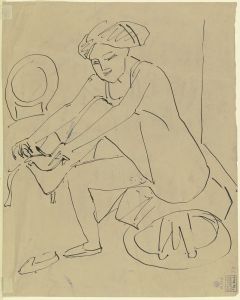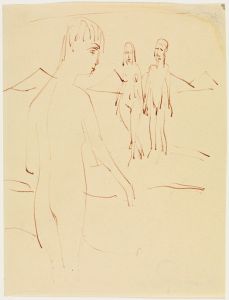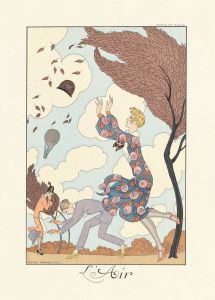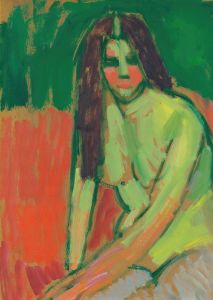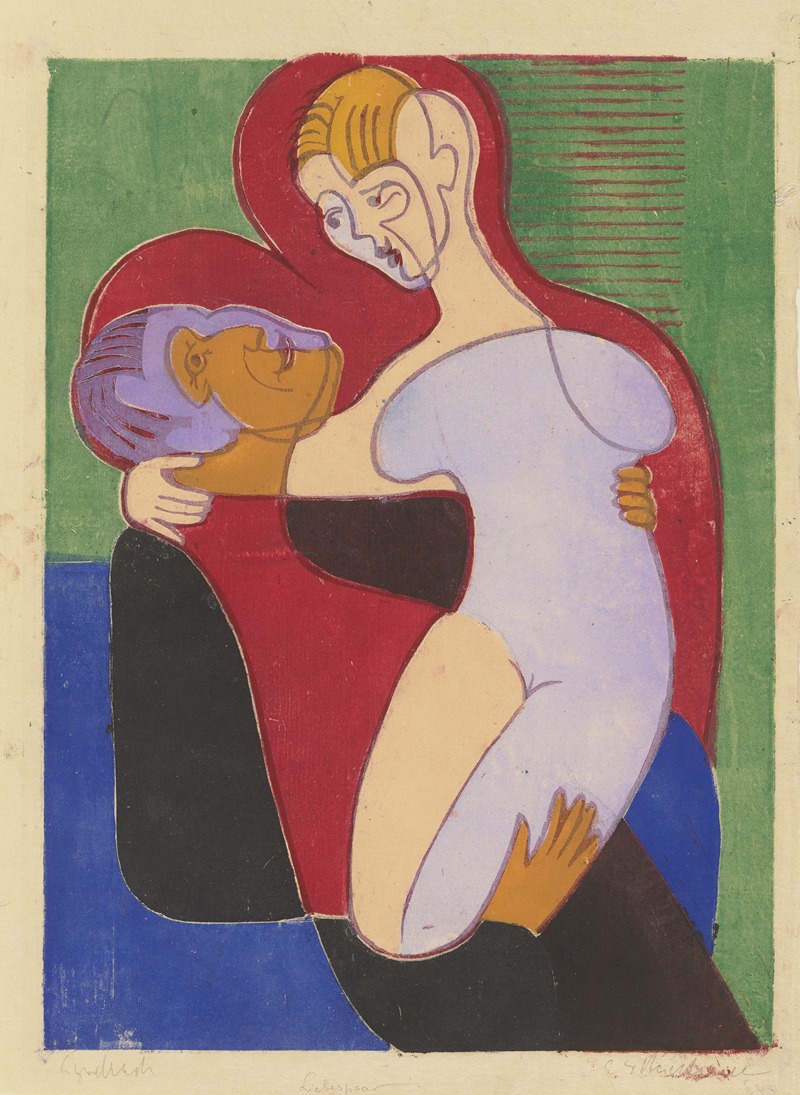
Liebespaar
A hand-painted replica of Ernst Ludwig Kirchner’s masterpiece Liebespaar, meticulously crafted by professional artists to capture the true essence of the original. Each piece is created with museum-quality canvas and rare mineral pigments, carefully painted by experienced artists with delicate brushstrokes and rich, layered colors to perfectly recreate the texture of the original artwork. Unlike machine-printed reproductions, this hand-painted version brings the painting to life, infused with the artist’s emotions and skill in every stroke. Whether for personal collection or home decoration, it instantly elevates the artistic atmosphere of any space.
Ernst Ludwig Kirchner, a prominent German expressionist painter and one of the founding members of the artist group Die Brücke, created the painting "Liebespaar" (translated as "Lovers") during a period marked by intense creativity and exploration of modernist themes. Kirchner's work is characterized by its bold use of color, dynamic compositions, and a focus on the human form, often exploring themes of intimacy and the complexities of human relationships.
"Liebespaar" is a quintessential example of Kirchner's expressionist style, which sought to convey emotional experience rather than physical reality. The painting captures a couple in an intimate embrace, a subject that Kirchner frequently explored in his work. The figures are rendered with exaggerated forms and vibrant colors, typical of Kirchner's approach to expressionism, which aimed to evoke emotional responses from the viewer.
Kirchner's use of color in "Liebespaar" is particularly noteworthy. He employs a palette that is both vivid and contrasting, with bold strokes that emphasize the emotional intensity of the scene. The colors are not used to replicate reality but to express the inner emotions and psychological states of the subjects. This technique is a hallmark of expressionism, where the artist's subjective perspective is paramount.
The composition of "Liebespaar" reflects Kirchner's interest in the dynamic interaction between figures and space. The couple is often depicted in a way that suggests movement and tension, with angular lines and distorted forms that create a sense of immediacy and intimacy. This approach is indicative of Kirchner's broader artistic goals, which included breaking away from traditional artistic conventions and exploring new ways of representing the human experience.
Kirchner's work, including "Liebespaar," was heavily influenced by the socio-political context of early 20th-century Germany. The period was marked by rapid industrialization, urbanization, and social change, all of which are reflected in the themes and styles of expressionist art. Kirchner and his contemporaries sought to capture the anxieties and aspirations of their time, often focusing on the alienation and fragmentation of modern life.
Throughout his career, Kirchner faced significant challenges, including the impact of World War I and the subsequent political turmoil in Germany. Despite these difficulties, he continued to produce art that was innovative and influential. His work, including "Liebespaar," has been recognized for its contribution to the development of modern art and its ability to convey complex emotional and psychological states.
"Liebespaar" remains an important piece within Kirchner's oeuvre, exemplifying his mastery of expressionist techniques and his commitment to exploring the depths of human emotion. The painting is a testament to Kirchner's ability to capture the essence of human relationships through his distinctive artistic vision. Today, Kirchner's work is celebrated for its boldness and emotional depth, and "Liebespaar" continues to be studied and appreciated for its artistic and historical significance.





